
The early and mid 1990s saw a lot of fighting games. In fact, let me rephrase that: the early and mid 1990s saw an overwhelming, almighty heap of fighting games. A majority of these games were direct-to-console releases, and most of them were clumsy clones of the era’s two big titles: Mortal Kombat and Street Fighter II. Roughly a third of them were good enough to be playable, and very few of them stood out. Eternal Champions was one that drew attention for being very fun, if not a bit weird.
Eternal Champions was released by Sega in 1993, and was exclusive to their console, the Genesis/Mega Drive. I owned a Genesis for many years before I had any prolonged exposure to the SNES, so I ended up playing a lot of the console’s exclusive titles. I also had a taste for fighting games, namely the SFII and MK ports, so I had my six-button controller already. And believe me, this game was a pain in the ass without one. If you used the regular 3 button controller, you had to use Start to switch between punches and kicks. The game was originally developed to work with the ill fated Activator, a sort of floor pad you’d stand on and move your body to execute different moves. I have never played with an Activator, and I’ve only ever seen one of them in person (in the collection of someone with way too much money). By all accounts, it was highly inaccurate, and it also cost quite a bit for something so dicey. Thankfully, Eternal Champions played just fine with a handheld controller… if you had the six-button deal.

While the game’s plot is barely more complex than usual for fighting titles, it’s a bit more creative than usual. Gifted fighters from different eras – past, present, and future – have been brought back to life for a tournament in a sort of time vacuum by an entity known as the Eternal Champion. Each fighter died just before achieving a goal or making a choice that would have altered the course of human destiny. The prize: a chance to go back and try again. Each character is from a different time and place (some fictional), and is a master of a different style of fighting. Characters range from cyborg kickboxers and Atlantean Capoeria fighters to ninja assassins and Depression-era gangsters who inexplicably know mantis kung-fu. There is even a wizard character, Xavier, who melds hapkido cane-fighting with powerful magic. One of my personal favorites is Midknight, a genetic vampire from the Vietnam War era who uses Bruce Lee’s style, Jeet Kune Do.


The fighters face off in a variety of different staged locales, each reminiscent of a character’s native time/place. Each fighter has a unique array of normal punches and kicks, and a handful of special moves. These moves usually involve pressing two buttons at once or “charging” backward or down like Guile’s specials in SFII. A power meter, resembling a yin/yang symbol, depleted when specials were used and was meant to keep players from spamming their special moves. During casual play, this could be turned off, allowing infinite use of these moves by either player. Here’s the thing: whether it was intentional or not, the CPU fighters during the regular single player mode could keep using specials even after their meters had depleted. The game had fatalities of a sort, as well; if you defeated your foe so that they landed in just the right spot, depending on the stage you were in, they’d die a special death. Observe the video below:
The game also had a plethora of customizable options for 2 player combat. There was even a setting that allowed you to enter a customized “danger room” sort of area to fight in, with a hand-chosen set of built-in hazards to avoid while simultaneously pummeling your opponent.
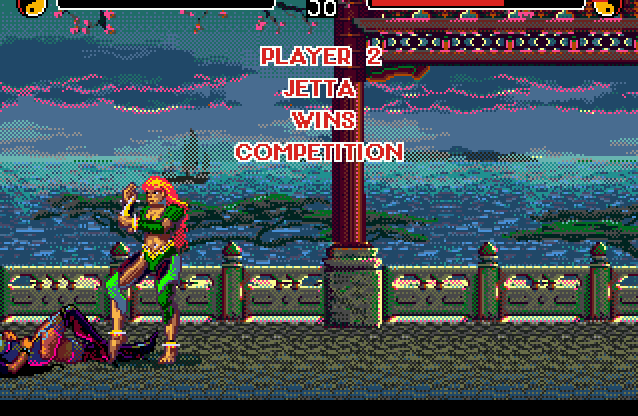
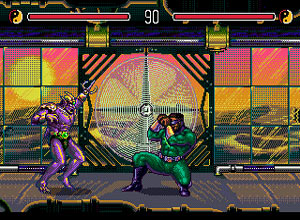
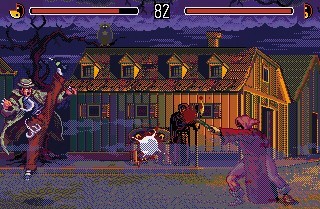
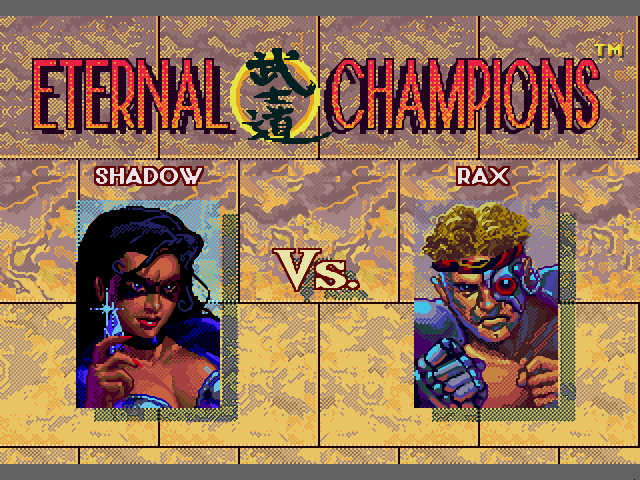
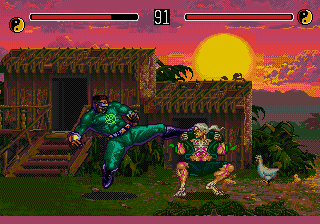
Eternal Champions received mixed reviews, obviously being more popular among Genesis purists than among generalist gamers. Its graphics were very good, and all the characters are depicted in great detail. As with most Sega Genesis titles, the soundtrack is incredible, with a lot of emotion and a rich instrumentation that adds plenty of character to the game.
A sequel for the Sega CD was made shortly afterward, with a couple extra characters and slightly better graphics. A third entry was planned for the Saturn console, but it was canceled so as not to compete too heavily with Sega’s more commercially successful Virtua Fighter, which was also planned for release on the Saturn. Two spin-offs were released as well; Chicago Syndicate for the Game Gear (starring the kung fu gangster character Larcen) and X-Perts for the Genesis (starring the ninja assassin Shadow).

I give Eternal Champions an 8/10. It’s an excellent entry into its genre, incredibly colorful, and it came during an otherwise cluttered time in 90s gaming history. It’s easy to overlook, but if you’re able, I encourage you to give it a spin.



